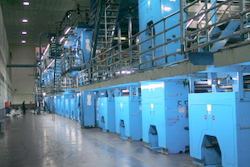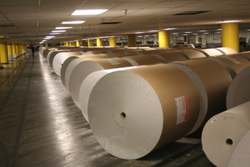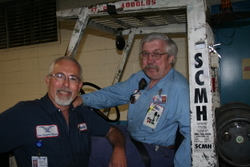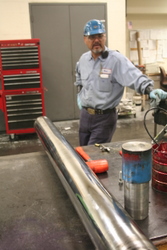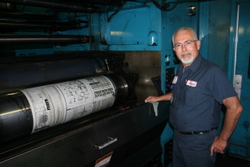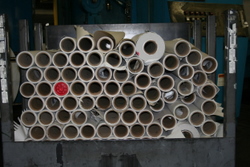If you want to understand why the newspaper industry is doomed, read the comments of Sun-Times Media Group CEO Cyrus Freidheim from a Columbia College panel this week. The press is nowhere near as robust or strong a watchdog as it has been…The free press really is the newsroom. It is not technology. It’s really the newsroom.
Freidheim’s comments reflect the kind of insularity that will only hasten newspapers’ collapse. Across the U.S., too many editors and executives are convinced that there is only one kind of true journalism, and that it involves a newsroom, editors, reporters, slot men and a copy desk. Any model that doesn’t conform to this rigid and traditional view isn’t genuine and so should be dismissed. They are blind to the prospect that any other form of journalism could deliver value, much less improve upon the current model.
As we’ve noted before, news journalism as practiced today is a study in inefficiency. The idea that hundreds of thousands of readers should invest their faith in the judgment of a handful of journalists to determine what they may and may not know is intuitively ridiculous in an age of abundant information. It’s a model that made sense when we had no other choice. It makes absolutely no sense any more.
In order to realize the potential of a new kind of journalism – one in which millions of individuals contribute to and enrich the body of information – we must discard our old assumptions about what journalism should be. It would be a blessing to never again have to see the phrase true journalism, with all the institutional arrogance it implies. Unfortunately, as reporters, editors and news executives who are mired in the past continue to curse the gathering darkness, we are likely to see it many more times.
Contrast the gloom of the ink-on-dead-trees business to the boisterous glee of a meeting of Diggnation as Jeff Jarvis describes it after a visit to Digg.com‘s first East Coast party. Digg is one of the most popular sites on the Internet and it’s creating a new approach to presenting the news. Instead of leaving news judgment in the hands of a few editors, the entire community of Digg members is invited to vote on what should go on the front page. And vote they do, many thousands at a time. A story that makes it to the front page of Digg can draw hundreds of thousand of visitors to a web page in the matter of an hour or two. Is this model perfect? Of course not. Is there value in this idea? Absolutely. Should newspaper executives learn from it? Well, consider Jarvis’ words:
[Digg Founder Kevin] Rose and company have built a real media enterprise from nothing but technology. What’s notable to me, more than its size, is the passion and loyalty of its audience, which was what was most evident last night. Could you imagine 2,000 fans standing in the rain for the chance to watch your local anchorman or hear your local editor? Is it possible for old media to inspire this kind of passion?
Also, read the American Journalism Review’s coverage of The Smoking Gun, a profitable investigative website that specializes in digging up public documents and exposing them for people to verify and comment upon. You’ve already visited this site’s extensive collection of celebrity mug shots. Everyone has. The Gun has three employees and has broken some major stories, as well as exposed other supposedly legitimate stories as fakes. But since there are no editors and no copy desk, we suppose this isn’t true journalism.
Jarvis further comments on the emerging model in this post. We couldn’t have said it better ourselves. It’s not a matter of either/or. It’s the best of both.
Miscellany
The owners of the Philadelphia Inquirer and Daily News have warned for months that they were on the brink of defaulting on their loans, and now they’ve missed a key interest payment. The payment on $85 million in loans was due on June 1 and Philadelphia Media Holdings LLC’s failure to pay will force it into a higher debt bracket at best. The payment was blocked by lenders who hold another $295 million in debt so as to avoid hurting Philadelphia Media’s cash flow. This means the holding company is now forced to renegotiate its loans, most likely at a higher interest rate. If it fails, it faces the risk of default.
Add Microsoft CEO Steve Ballmer to the
list of prominent executives predicting newspapers’ demise, only Ballmer is casting the shroud a little wider. He told the
Washington Post that in a decade there will be no newspapers, no magazines that are delivered in paper form.” He later corrected that timeframe to be variable, but you get the point. Everything will be delivered over an electronic network, he said.
As shrewd a guy as Ballmer is, his sweeping generalization is probably not realistic. For one thing, newspaper circulation is actually growing in some developing economies. For another, some printed publications are doing just fine, thank you. Pick up an issue of Brides magazine next time you’re in the B&N and see if you can make a case for its impending death. Details aside, Ballmer’s prediction is probably not unrealistic for major metro dailies, whose decline is accelerating faster than even the most pessimistic forecasts.
Free papers may be a growth market, but profits are still proving problematic. Scotland’s Aberdeen Independent
will close this month after a 12-year run. The paper never made a profit, despite having been voted Scotland’s best free weekly eight times during its 12-year existence. Thirty staff members will lose their jobs.
Newsosaur Alan Mutter quotes a Deutsche Bank analyst
predicting an 11.2% drop in print sales in 2008, which would make this the worst annual revenue decline in industry history. Mutter estimates that, in constant dollars, the newspaper industry today is worth only 70% of its 1996 value, and the trend is in the wrong direction. Circulation levels are already at post-WW II lows and are headed further down. We keep throwing more and more rope into the well, but we never seem to hit bottom, he quotes one industry sales executive as saying.
And Finally…
- One of the reasons many viruses die out is that they succeed in killing their hosts so quickly that the hosts have no opportunity spread the virus. In that spirit, the Los Angeles Times Pressmens 20 Year Club reprints this gem of a communiqué from its union to local businesses who advertise in the LA Times. In short, the union is threatening to try to drive out of existence the dwindling number of businesses that advertise in the LA Times because the paper won’t negotiate in good faith with the union. Of course, the less business the paper has, the less likely it is to negotiate in good faith. So let’s kill the host. At least we’ll feel better about ourselves. Sheesh.
- Frontline Reporter has a great short article on Top 10 Journalistic Uses for Twitter. Read them and start putting this simple yet powerful little utility to work for you.
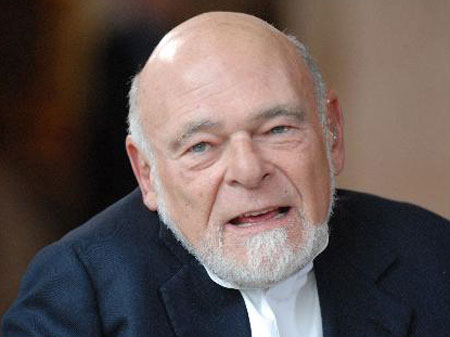 You have to wonder if Chicago Tribune owner Sam Zell wishes he had stayed in the predictable world of real estate, where market collapses are at least cyclical. As a novice publishing CEO presiding over a market shift of historic proportions, he looks increasingly helpless even as he becomes more belligerent. Among the recent stories:
You have to wonder if Chicago Tribune owner Sam Zell wishes he had stayed in the predictable world of real estate, where market collapses are at least cyclical. As a novice publishing CEO presiding over a market shift of historic proportions, he looks increasingly helpless even as he becomes more belligerent. Among the recent stories: The
The 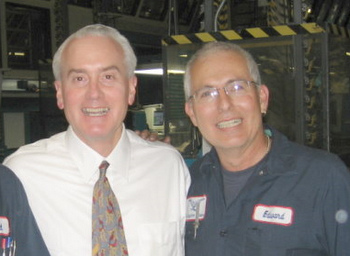
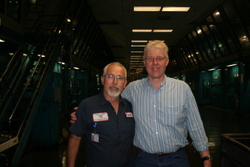 Newspapers have been called the “daily miracle.†The accomplishment of delivering a product of such remarkable breadth and complexity to hundreds of thousands of doorsteps by
Newspapers have been called the “daily miracle.†The accomplishment of delivering a product of such remarkable breadth and complexity to hundreds of thousands of doorsteps by 